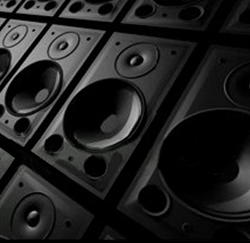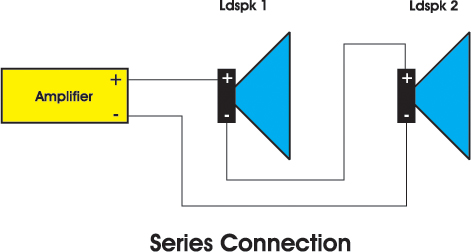
Water is now exiting the bucket at twice the previous rate (more current is flowing), so the supply to the bucket would have to be increased to maintain the water level.
The second hole is analogous to a second loudspeaker connected in parallel with the first to an amplifier.
The load impedance (the total opposition to water leaving the bucket) is decreased, meaning that the replenishing supply must work harder to keep up.
The bucket represents the amplifier, the holes the load, and the replenishing supply is the AC cord that plugs into the wall. Since water is flowing in one direction only, the current is DC (direct current).
The same principles hold true for AC (alternating current), which in this example would mean that water is alternately flowing in and out through the holes in the bucket.
GETTING THE FLOW
Series connection means that the current flows through one voice coil before it flows through the other.

The applied voltage will divide between the two in proportion to the magnitude of their impedance. If their impedance is the same (the most common case), then the voltage will divide equally across the two. The same current will flow through both.
Series connection is usually accomplished by connecting the amplifier “+” to the “+” of the first loudspeaker, and the “-” of the first loudspeaker to the “+” of the second, and finally the “-” of the second to the “-” of the amplifier.
The total impedance of loudspeakers in series will be the simple sum of their individual impedances, so adding more loudspeakers will decrease the load on the amplifier.
In other words, the higher the load impedance, the lower the current demand on the amplifier, and the less power delivered to the load.
Series connection is rarely used in multiple loudspeaker systems since adding a loudspeaker will change the power flow (and loudness) through all of the loudspeakers. If one loudspeaker opens up, the feed to all of the loudspeakers is lost.
SAME ACROSS EACH
Parallel connection means that the amplifier output current flows through both of the voice coils simultaneously (a current divider), in proportion to their impedance.
